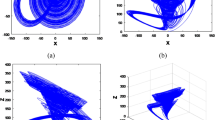Abstract
Quality of true random number generators (TRNGs) based on a sound card depends of two components: an “unpredictable” source with high entropy, and a post processing function which, when used on a digitalized form of a random signal source, produces a result that is statistically very close to the uniform distribution. This paper presents a method of obtaining true random bits using hardware of a computer sound card, on whose audio input through the use of a microphone a random environmental noise signal is brought and for post-processing a new procedure of distributing bits is used or so called “Mixing Bits in Steps and XORing of Adjacent Bits” (MiBiS&XOR). With the presented distillation procedure, in a simple and efficient way, adjacent input bits, who are in a certain correlation, are separated and divided one from another, by which reduces the total autocorrelation and then in this new sequence, adjacent bits are XORed which increases the entropy and reduces bias of output bit sequence. Experimental statistical randomness tests performed on sequences of bits obtained as a result of the proposed method, confirm the excellent quality of the TRNGs output.










Similar content being viewed by others
References
Menezes, A. J., Vanstone, S. A., & Oorschot, P. C. V. (1996). Handbook of applied cryptography. Boca Raton: CRC Press.
Xin, Q., Zeng, X., et al. (2005). Modeling and system simulation of truly random number generator. Journal of System Simulation, 17(1), 53–56.
Kuriyama, K., Hilger, J., & Hanemann, M. (2013). A random parameter model with onsite sampling for recreation site choice: An application to Southern California shoreline sportfishing. Environmental & Resource Economics, 56(4), 481–497.
Matsukawa, Y., Kamei, S., et al. (2008). Eye movement and random number in NP lupus evaluation. Clinical Rheumatology, 27(2), 237–240.
Gentle, J. E. (2004). Random number generation and Monte Carlo methods. New York: Springer.
Morrison, R. (2001). Design of a true random number generator using audio input. Journal of Cryptology, 1(1), 1–4.
Walker, J. (1996). HotBits: Genuine random numbers, generated by radioactive decay. https://www.fourmilab.ch/hotbits/. Accessed July 27, 2014.
Tani, M., Yamamoto, K., et al. (2012). Photoconductive emission and detection of terahertz pulsed radiation using semiconductors and semiconductor devices. Journal of Infrared, Millimeter, and Terahertz Waves, 33(4), 393–404.
Dollfus, P., Bournel, A., et al. (2006). Thermal noise in nanometric DG-MOSFET. Journal of Computational Electronics, 5(4), 479–482.
Stipcevic, M., & Rogina, B. (2007). Quantum random number generator. arXiv:quant-ph/0609043v2. http://qrbg.irb.hr/0609043v2.pdf. Accessed April 23, 2014.
Santoro, R., Sentieys, O., & Roy, S. (2009). On-line monitoring of random number generators for embedded security. Circuits and Systems. doi:10.1109/ISCAS.2009.5118446.
Diffie, W. (1996). The national security establishment and the development of public-key cryptography. Designs, Codes and Cryptography, 7(1–2), 9–12.
Golic, J. (2006). New methods for digital generation and post processing of random data. IEEE Transactions on Computers, 55(10), 1217–1229.
Nishioka, M., Satoh, H., & Sakurai, K. (2001). Design and analysis of fast provably secure public-key cryptosystems based on a modular squaring. In: Information Security and Cryptology (Vol. 2288, pp. 81–102). LNCS.
Barak, B., Shaltiel, R., & Tromer, E. (2003). True random number generators secure in a changing environment. In: Cryptographic hardware and embedded systems (Vol. 2779, pp. 166–180). LNCS.
Bucci, M., & Luzzi, R. (2005). Design of testable random bit generators. In: Cryptographic hardware and embedded systems (Vol. 3659, pp. 147–156). LNCS.
Jun, B., & Kocher, P. (1999). The Intel random number generator. www.cryptography.com/public/pdf/IntelRNG.pdf. Accessed May 13, 2014.
Petrie, C., & Connelly, J. (1996). Modeling and simulation of oscillator-based random number generators. IEEE International Symposium on Circuits and Systems, 4, 324–327.
Che, W., Deng, H., Tan, X., et al. (2007). Scheme of truly random number generator application in RFID Tag. http://www.autoidlabs.org/single-view/dir/article/6/231/page.html. Accessed May 23, 2014.
Bucci, M., Germani, L., Luzzi, R., et al. (2003). A high-speed oscillator-based truly random number source for cryptographic applications on a smart card IC. IEEE Transactions on Computers, 52(4), 403–409.
Dichtl, M. (2003). How to predict the output of a hardware random number generator. In: Workshop on cryptographic hardware and embedded systems (Vol. 2779, pp. 181–188). LNCS.
Bucci, M., & Bagini, V. (1999). A design of reliable true random number generator for cryptographic applications. Cryptographic hardware and embedded systems (Vol. 1717, pp. 204–218). LNCS.
Molotkov, N. S. (2012). Entropy uncertainty relations and stability of phase-temporal quantum cryptography with finite-length transmitted strings. Journal of Experimental and Theoretical Physics, 115(6), 969–985.
Schindler, W., & Killmann, W. (2001). AIS 31: Functionality classes and evaluation methodology for true (physical) random number generators. Bundesamt fur Sicherheit in der Informationstechnik (BSI): Bonn.
National Institute of Standards and Technology USA, FIPS PUB 140-1 Federal Information Processing Standards. Publication. http://csrc.nist.gov/publications/fips/fips140-1/fips1401.pdf.
Peres, Y. (1992). Iterating Von Neumann’s procedure for extracting random bits. Annals of Statistics, 20(1), 590–597.
Author information
Authors and Affiliations
Corresponding author
Rights and permissions
About this article
Cite this article
Nikolic, S., Veinovic, M. Advancement of True Random Number Generators Based on Sound Cards Through Utilization of a New Post-processing Method. Wireless Pers Commun 91, 603–622 (2016). https://doi.org/10.1007/s11277-016-3480-9
Published:
Issue Date:
DOI: https://doi.org/10.1007/s11277-016-3480-9




